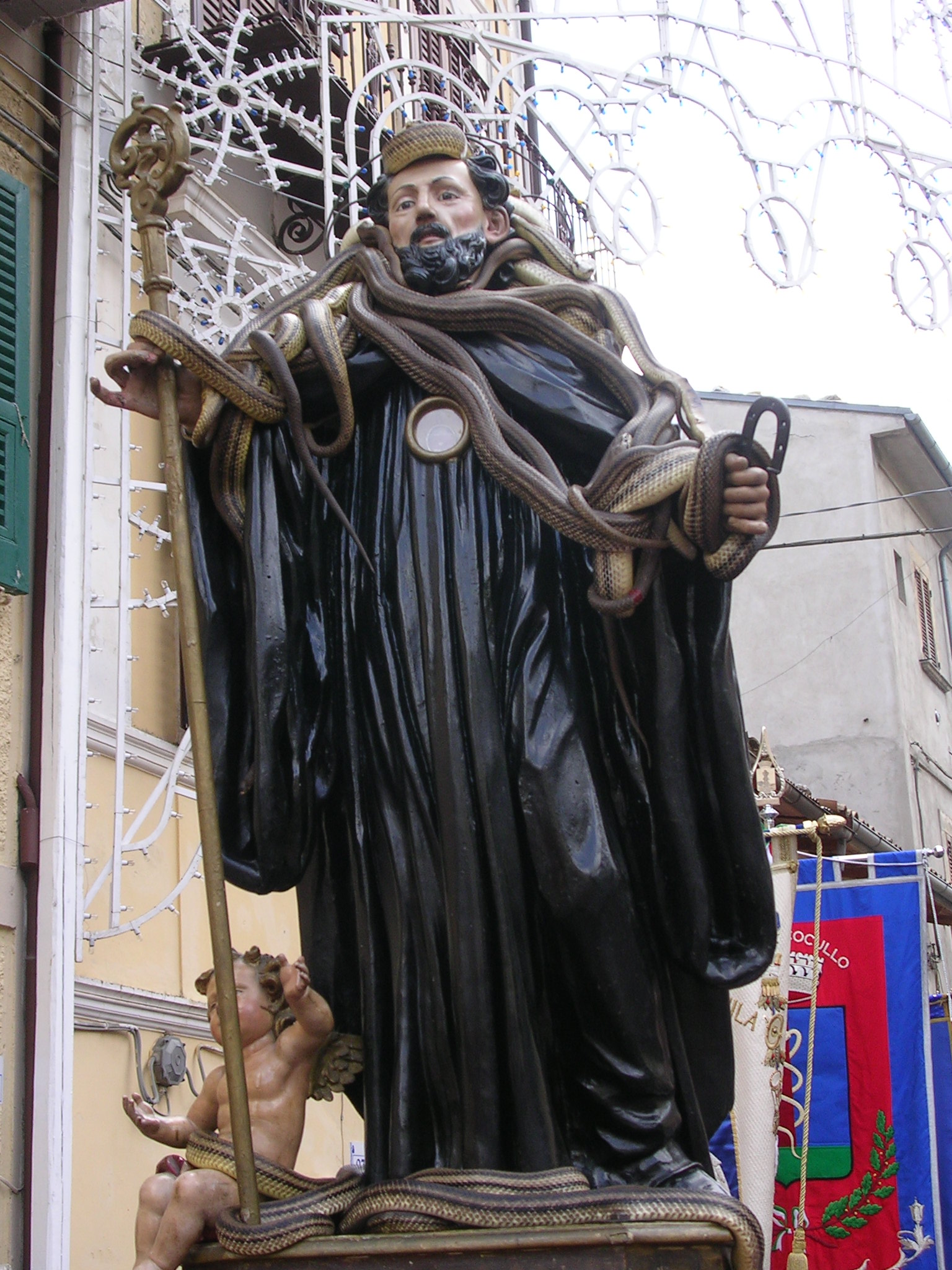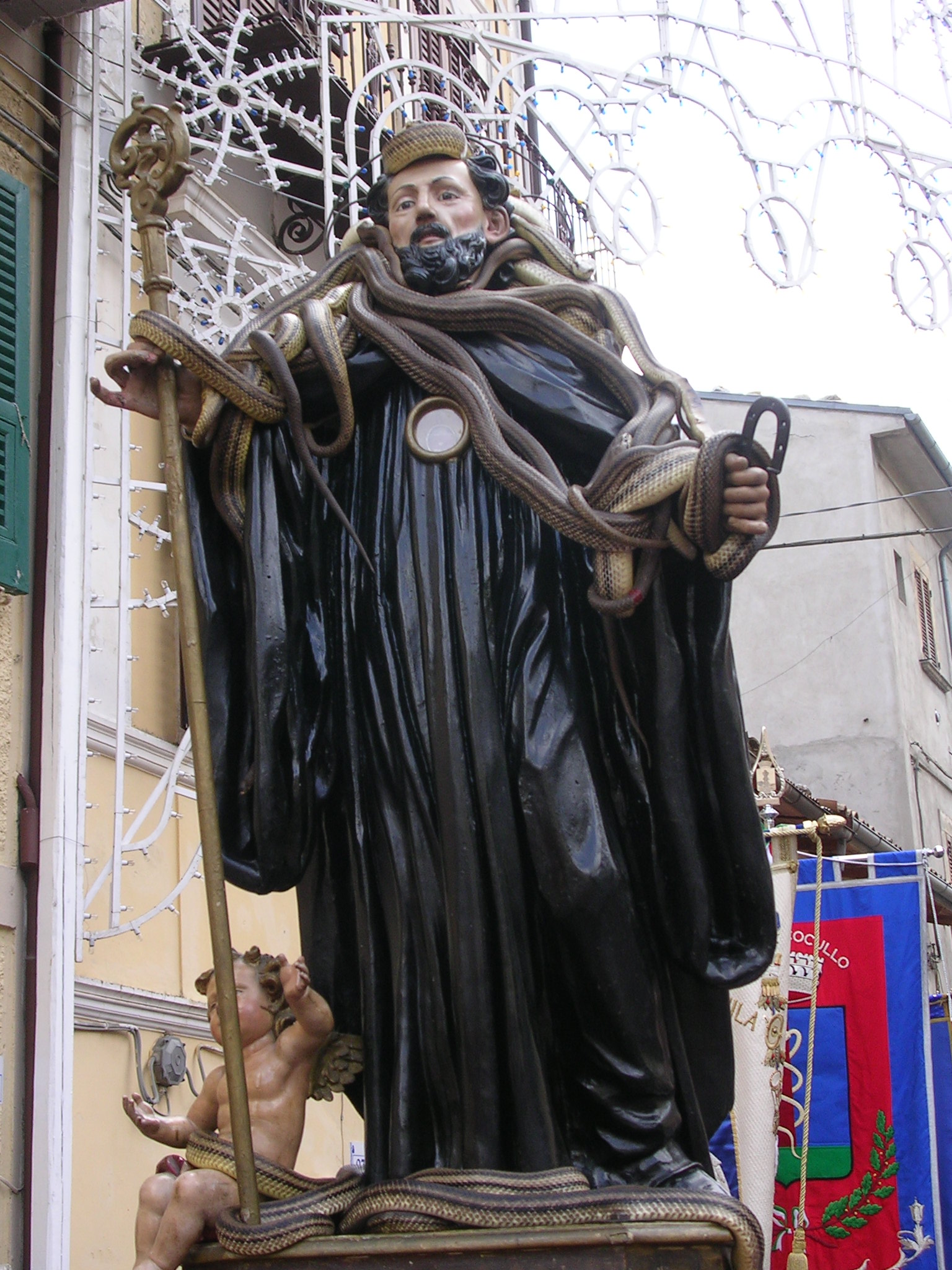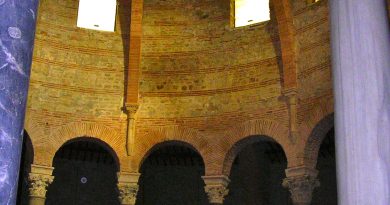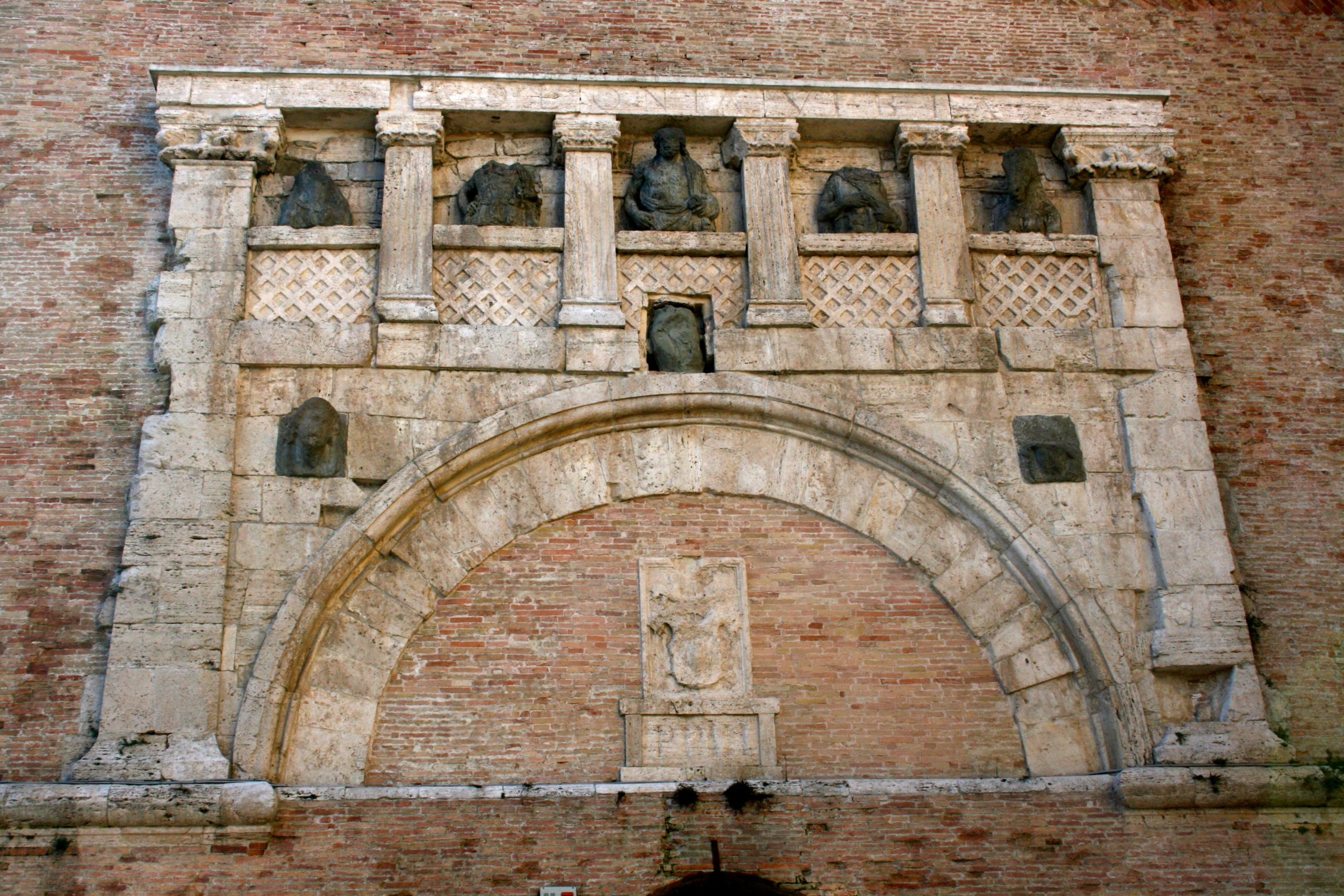The Festival of the snake charmers
Not to be confused with the founder of the Dominican order by the same name, St. Dominic from Foligno was a saint of Umbrian origin, born in 951 at Capodacqua near Foligno.
His cult is still being celebrated today at Cocullo, in Abruzzo, during the “Festival of the snake charmers”, a folkloric and religious event of great anthropologic interest.

Cocullo and few other places in Lazio and Abruzzo are exceptions, in that the figure of St. Dominic is not greatly known throughout the rest of Italy. Even in Umbria, where the saint was born in the tenth century, Dominic is almost completely unknown .
It was January 22, 1031 when the saint died at Sora. At Capodacqua (small village near Foligno) do they still celebrate the anniversary of his death by honoring a relic of the patron saint, and by singing an ancient psalm in Latin.
Venerated as the protector against bites from serpents and rabid dogs, Dominic was originally a Benedictine monk, educated at a monastery in Foligno, maybe in the Abbey of Sassovivo.

However he preferred the hermitic lifestyle to the cenobitic one, and thus he decided to leave Foligno in the direction of the wild mountains of Lazio, Molise and Abruzzo, where he founded various monasteries and performed many miracles.
As already mentioned, the great interest in his figure is linked to the traditional religious festival that take place at Cocullo, every first Thursday of May.
The absolute protagonists of the festival are the snakes, captured by the snake charmers of the village in the last days of April, offered to the saint with great devotion during the procession, and finally taken back to their holes in the forest at the conclusion of the festival.
The ritual is truly impressive and reaches its culmination in the moment when all the snake charmers place the captured reptiles on the statue of the saint, giving them the form of an enormous crown of snakes, that tangles around the head of the statue, and then slowly descends around its neck and arms.
Many devotees ask for a favor, a healing, or simply for the protection from viper bites.There are even those who invoke the saint in preventing toothaches.
In the Old Testament (Book of Genesis) the snake is a central figure in the Garden story, that represents the loss of immortality and wisdom: the serpent tempts Eve to seize wisdom, through disobeying God.
In many ancient cultures the serpent was considered a symbol of evil power and chaos from the underworld, as well as a symbol of fertility, life and healing.

Why at Cocullo the snakes are considered sacred?
We discover that in those wild lands – at a time when they were inhabited by an italic people named Marsi – the ancient mother goddess Angizia was worshipped and the snake was her attribute.
The Marsi dedicated to her the sanctuary uncovered in the old city of Anxa Angizia. Even the existence of a sacred wood named “Lucus Angitiae” reminds to the name of the present town “Luco dei Marsi”.
Angizia was an Italic deity tied to fertility rites. The tradition tells us that it was through her that the Marsi learned the art of phytotherapy and became famous to treat the bites of venomous serpents.
With the advent of Christianity the cult of the ancient goddess of fertility was not immediately abandoned. The christian rite of Cocullo could represent a slow syncretic process coming from the preexisting cult for Angizia. The early christian community of the Marsica region could have replaced the ancient worshipping for the mother goddess with the new cult for the medieval “Healer Saint,” absorbing the old pagan rituals and performing them in the new medieval folkloric and religious tradition: the Festival of the Snake charmers.



